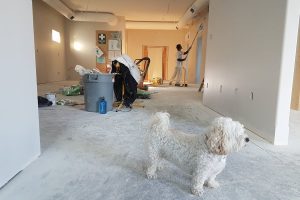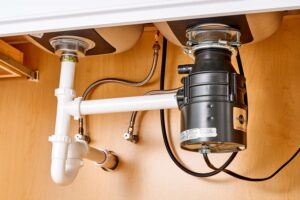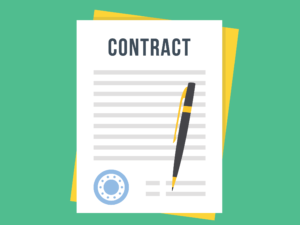Is Flipping Houses Still a Good way to Make Money?

In general terms, house prices in the UK have continued to grow at a disproportionate rate during the last few years. This has largely been inspired by an imbalance between supply and demand, which has created a market stacked heavily in favour of vendors.
This trend may be about to buck, however, with London experiencing a significant slowdown as prices in the capital fall to their lowest levels since the depths of the financial crisis. As a result, the average property value in the UK fell by 0.5% (or £73 per day) during August, bringing average growth within the market to around 2% for 2018.
While this may make some forms of real estate investment less palatable, however, techniques such as house flipping remain enduringly popular. But is this really a good way of making money?
Flipping Houses: An Overview
Flipping houses involves purchasing a property, making strategic renovations to enhance its value, and then selling it for a profit. The process requires a keen eye for potential, a knack for budgeting, and a taste for design. For home flippers, the goal is simple: buy low, invest wisely, and sell high.
How Flipping Houses Works
Flipping houses typically follows a simple formula:
- Property Acquisition: Identify distressed properties in promising locations.
- Strategic Renovations: Prioritize renovations that add significant value.
- Market Timing: Gauge the real estate market for the right time to sell.
- Profitable Sale: List the property and close the deal for a lucrative return.
Where to Start Flipping Houses
If you’re considering venturing into the world of house flipping, the first step is crucial: where to start. Begin by:
- Researching Local Markets: Identify areas with high demand and potential for growth.
- Networking with Real Estate Professionals: Build connections for insights into market trends.
- Financial Preparations: Secure financing options and establish a budget for the flip.
- Educating Yourself: Gain knowledge about the renovation process and real estate regulations.
Appraising House Flipping and the So-called “70%” Rule
In simple terms, house flipping is the process of purchasing a devalued property and adding value to establish it as a revenue-generating asset. This is then resold quickly and for a profit, and this technique is generally considered to offer excellent returns when it’s executed well.
At the heart of successful house flipping is the so-called 70% rule, which dictates that an investor should aim to pay around 70% of a property’s ARV (after repair value) minus the cost of the remodelling works required.
The ARV relates to the value of the property once any necessary works have been undertaken, and the 70% rule enables investors to operate within a 30% profit margin when forcing through a sale.
For example, if you want to flip a property with an ARV of £150,000 but need to spend £25,000 on repairs, the 70% dictates that you should aim to pay no more than £80,000 for the home. A degree of compromise is required here, of course, while you may be able to spend a little more in instances where you can have repairs completed at a discounted rate.
Does House Flipping Still Represent a Solid Investment?
We’ve already touched on the fact that house flipping retains universal popularity, and one of the reasons for this is that it can be successfully attempted regardless of the surrounding housing market.
This is because properties are typically purchased at a discounted rate through an auction house, meaning that investors have considerable flexibility when looking to resell the asset for a profit.
More specifically, houses purchased for flipping boast a higher potential margin and are not completely bound by market conditions, creating an opportunity for investors to profit even in depreciating conditions.
In the current market, house flipping is certainly a viable method of investment, as while the overall rate of growth has declined in recent times it remains well above Nationwide’s annual forecast of 1%. So long as investors can identify bargains and complete the necessary repairs in good order, they can achieve a healthy profit as 2018 progresses.
The only potential issue here is a declining global economy, with some economists fearing that another financial crash could follow in the near-term. For now, however, house flipping remains a genuinely effective method of investment in a strained and slightly volatile market.
Do I Need to Have a Cash Offer to Flip a House?
While having cash on hand can offer advantages, it’s not mandatory. Consider these points:
- Financing Options: Explore loans and mortgages designed for house flippers.
- Leveraging Other People’s Money: Partner with investors or use creative financing.
- Calculating ROI: Evaluate the potential return on investment to make informed financial decisions.
How Much Do House Flippers Make?
The potential earnings from flipping houses can be lucrative, but they come with risks. On average, home flippers make a profit ranging from tens of thousands to hundreds of thousands of dollars. Factors influencing profits include:
- Property Location: High-demand areas often yield better returns.
- Renovation Quality: Well-executed renovations enhance the property’s value.
- Market Conditions: Fluctuations in the real estate market can impact profits.
Which Cities Are the Best to Flip a House?
Choosing the right location is crucial for successful house flipping. Consider these factors when selecting a city:
- Job Growth: Cities with booming job markets attract potential buyers.
- Affordability: Look for areas where properties are reasonably priced.
- Market Trends: Research current and future trends in the local real estate market.
How Long Does It Take to Flip a House?
Time is money in the world of house flipping, and efficiency is key. On average, the process takes a few months, but several factors can impact the timeline:
- Scope of Renovations: Extensive renovations may prolong the project.
- Permitting Processes: Delays in obtaining permits can hinder progress.
- Market Dynamics: Selling quickly requires a keen understanding of market trends.
In conclusion, the potential to make money flipping houses still exists, but success requires diligence, market knowledge, and a strategic approach. As with any investment, risks are inherent, but the rewards can be significant for those willing to navigate the challenges of the real estate market.






